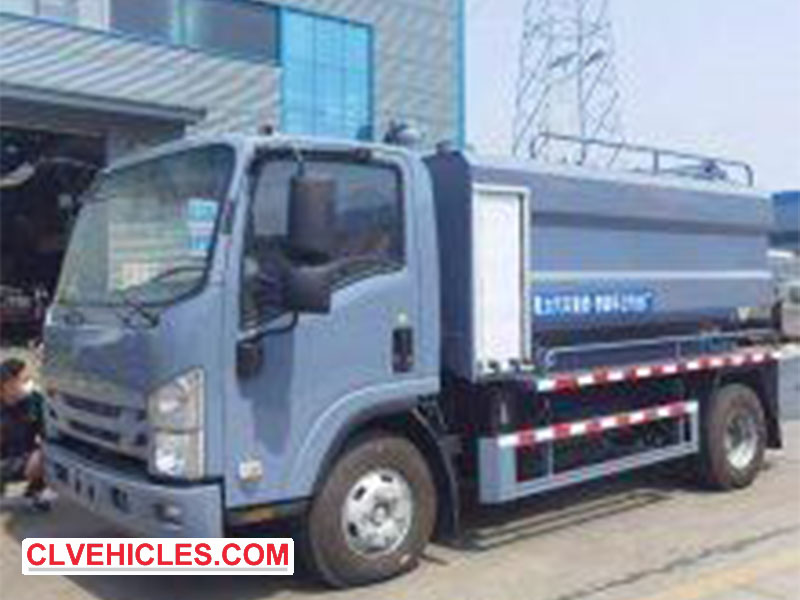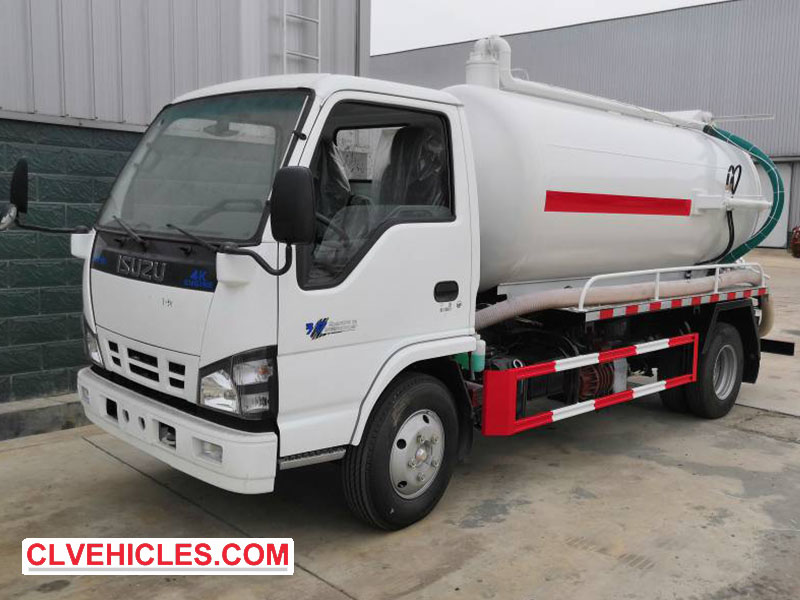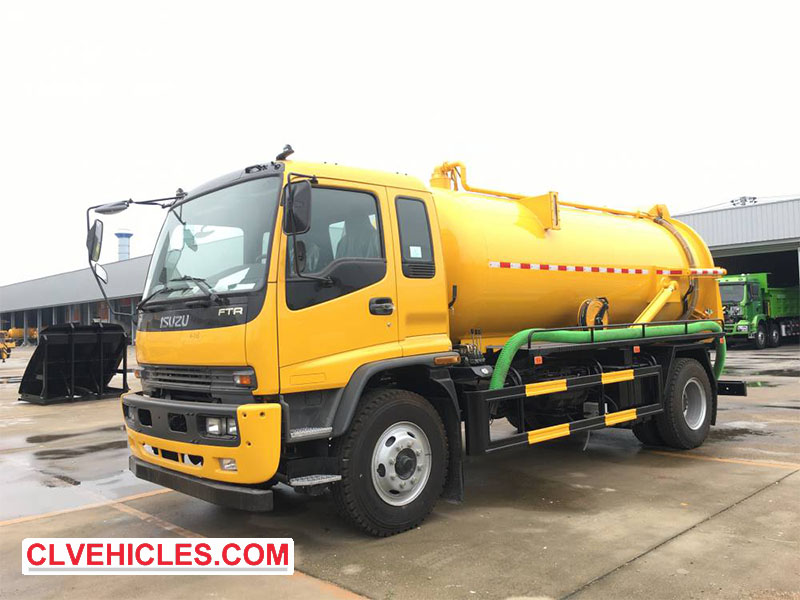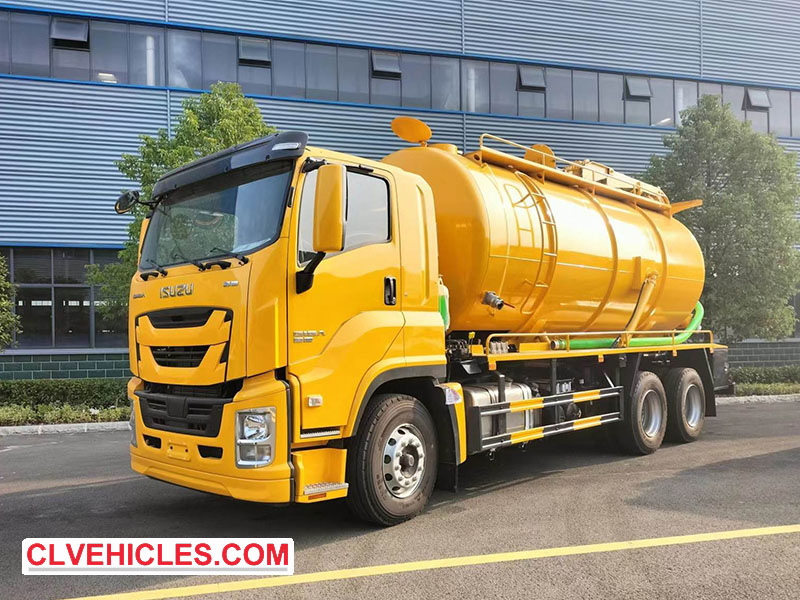ISUZU High-pressure sewage cleaning and suction trucks have a wide range of uses, including cleaning municipal sewers, clearing pipe sediment, narrow ditches, and flushing walls and industrial drains. They can also be used for water sprinkling, water transport, road watering, and even emergency firefighting. To ensure safe and efficient operation, please observe the following precautions.

Always keep the vacuum pump within its recommended operating speed range. Excessively high speeds can cause rotor overheating, while excessively low speeds can cause mechanical shock and premature wear. Adjust the hand throttle according to the pump type to achieve the optimal operating range. When unloading, operate only on level ground. Tilting or lifting a tank on a slope can cause component deformation, operational failure, and even rollover accidents. Before lifting a tank for unloading, open the tank door and loosen the locking bolts. Raise the rear door to the desired angle. Never attempt to lift the fuel tank with the rear door closed and fully loaded, as this creates a serious risk of rollover.

When engaging the oil or vacuum pump via the power take-off, ensure the engine is idling and the clutch pedal is fully depressed. Only gradually release the clutch after activating the power take-off. The vacuum and oil pumps must remain off during transport. Avoid inhaling objects larger than the hose diameter or handling waste oil and hazardous materials. When accessing a raised fuel tank for inspection or maintenance, always use support rods and safety blocks to prevent accidental collapse.

When transporting wastewater, drive at a moderate and steady speed. Avoid sharp turns and sudden braking, as a liquid load raises the vehicle's center of gravity and increases instability. Always obey traffic rules and operate the vehicle in a safe and controlled manner.

To know more about our ISUZU High-pressure sewage cleaning and suction trucks, please check below website: